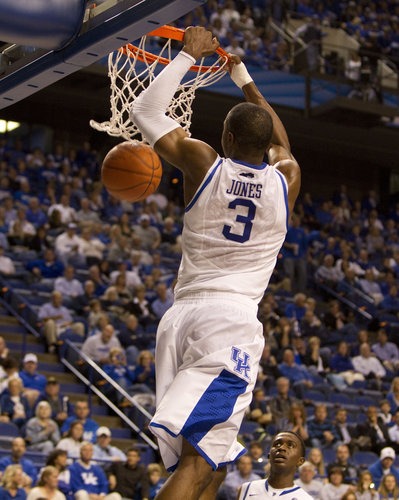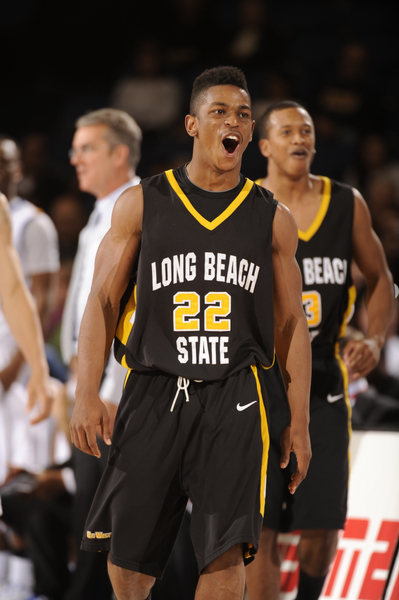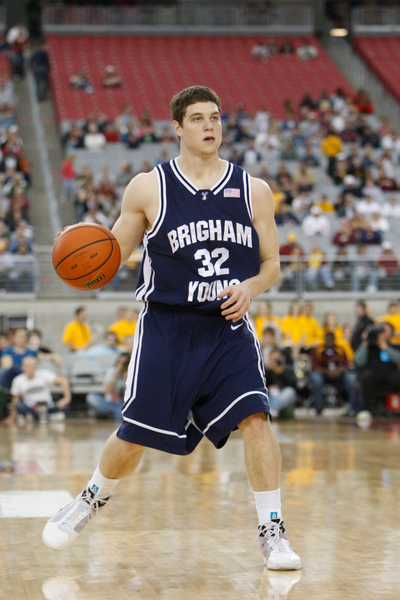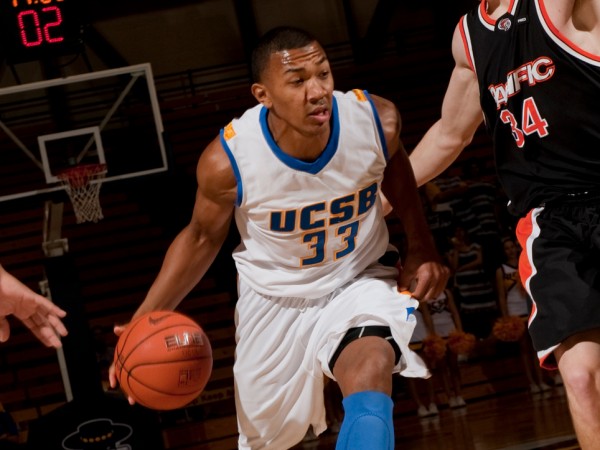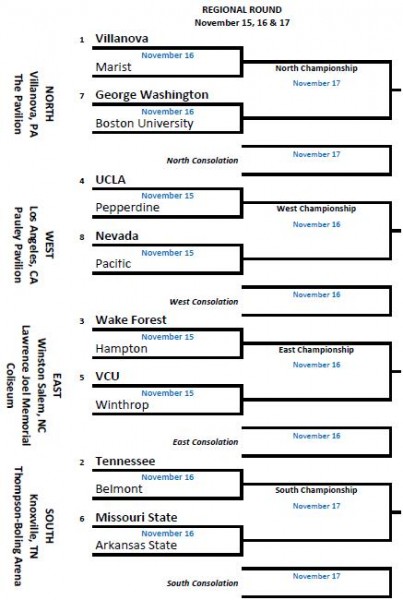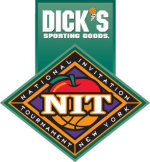Checking in on… the Big West
Posted by Brian Goodman on November 20th, 2010
Ryan ZumMallen is Executive Editor and sportswriter for The Long Beach Post and the RTC correspondent for the Big West Conference.
A Look Back
With about two weeks of games behind us, we’re learning a little bit more about how the Big West may play out this season. Despite a slow start thus far, UC Santa Barbara is still the consensus favorite with all five starters returning from a team that went to the NCAA Tournament last year. Long Beach State believes their time is now and has the talent to challenge, but after just two games there are obvious depth issues that will need to be resolved quickly (strong competition like Clemson is lined up at this weekend’s Paradise Jam Classic). And though it looked like this may be a down year for perennial challenger Pacific, head coach Bob Thomason has shown why he may be the most respected coach in the conference by pulling his team to big victories over UTEP and Nevada. Senior forward Sam Willard has been a monster, putting up 18.7 PPG and 13.3 RPG against very good competition for Pacific, who only lost on a back-to-back road game at UCLA. Willard wasn’t selected to the conference preseason first team, but it looks like some sportswriters (including this one) may be eating their words this year.
Other than that, it’s been rough going for the Big West, which doesn’t have much to offer beyond those three teams and a possible strong push from UC Davis. We’ll be able to provide a much more accurate picture of the conference with a few more games in the books, but for now we turn our attention to the future. The success of the Big West lies not in this season or probably even the next, but several seasons down the line as the conference attempts to paint itself as a sustainable West Coast contender. We’re seeing attempts by several teams to take that leap this season, to become the next mid-major to make a name for itself – Long Beach State played #25 San Diego State tough and UCSB gets the Aztecs in December as well. Pacific faces an impressive nonconference schedule and there are far more games against Pac-10 opponents than usual. Clearly, the Big West is making a move.
The best scheduling in the world doesn’t matter if you can’t pull off the victories, and for that, the Big West simply needs better talent. By the looks of the recruiting announcements made over the past week, some of the initial pieces are coming into place. UC Davis picked up an elite athlete and defender in 6’6 forward J.T. Adenrele, while shooting guard Reese Morgan signed with Cal Poly SLO. But the highest-ranked recruit to sign onto a Big West school was point guard Michael Caffey – described by ESPN as “one of the top 5 point guards in the state” – with Long Beach State, who will also add an immediate impact with 6’7 wing and high-jump champion James Ennis from the JC ranks. The rest of the conference picked up a steady stream of quality players, but without much hype. For the Big West Conference to stay competitive over the long term, it will have to attract talent to match an increasingly challenging schedule. Otherwise, expect it to remain a one-bid conference come Tourney time.
Player of the Week
Without question, it’s the senior forward Sam Willard from Pacific. The easiest way to succeed in the Big West is to play for coach Bob Thomason, who continually takes teams without top-flight talent and turns them into conference contenders, if not champions. That’s not to say that Willard isn’t a very good player in his own right, just that Thomason knows how to take talent and maximize it. Case in point: Willard improved steadily in his first three years with Pacific, but it’s fair to say that no one expected him to throw up three straight double-doubles in early season wins over UTEP and Nevada. Willard has always been a force defensively but with added offensive moves and a lack of big post players in the conference, it could be a big year for both he and the Tigers.
Power Rankings:
- Pacific (2-1): The Tigers really made some noise after coming back from an 11-point halftime deficit to beat UTEP and new coach Tim Floyd, and then knocking off Nevada in the first round of the NIT Season Tip-Off in Los Angeles. Pacific lost to UCLA in the second round, but Willard has posted double-doubles in every game and Thomason has them playing very well to start off the season.
- UC Santa Barbara (1-2): It’s hard to gauge the Gauchos after a 1-2 start, but as the near-unanimous selection for preseason conference champions, they’ve simply got to be near the top at this point. A home loss to North Dakota State was a surprise, and a 72-70 loss at Oregon is up in the air because it’s a tough placeto play but the Ducks simply aren’t very good this year. Combo guard Orlando Johnson and forward James Nunnally have put the team on their backs, as expected, and are averaging 23.3 PPG and 18.7 PPG, respectively. In the Oregon game, only one other player attempted more than three shots.
- Long Beach State (1-1): Both players and coaches alike are saying that this is the year for the 49ers, with a quartet of juniors ready to step into the spotlight. The question isn’t whether or not they have the talent to do it – they do – but whether or not they can depend on going to the bench when they need to rest. After just two games, we’ve seen glaring weaknesses in the team’s depth with very little D-I experience to offer. Long Beach played #25 San Diego State to a halftime tie but ran out of gas because head coach Dan Monson refused to turn to the bench. With a chance to win, you can’t really blame him, but the starters began to cramp up and the more talented Aztecs took advantage for a 16-point win. This needs to be addressed and the Paradise Jam Classic this weekend could be a good time to get some minutes to bench guys.
- UC Davis (1-3): The Aggies started off poorly before finally picking up a blowout win against UC Santa Cruz, and have proven what most writers expected: They’ll really almost entirely on 6’8 guard Mark Payne and 6’7 forward Joe Harden, who are 1-2 on the team in both points and rebounds. The good news is that those two have talent to carry UC Davis to several wins both before and during conference play. The bad news is they’ve both had issues with staying healthy over the years and there isn’t much to turn to on the bench. Opponents like Boise State, UCLA and Cal will tell us a lot about their prospects this season.
- Cal State Fullerton (0-3): Despite a winless start and a blown 11-point lead against Central Michigan, the Titans’ season is actually looking up compared to the rest of the Big West thanks to the emergence of one possible star and solid play from the supporting cast. Fullerton lost nearly all of its scoring from last year due to graduation and transfers, but 6’7 forward Orane Chin is establishing himself as a force with a 22.7 PPG average. Players like Devon Peltier and Orlando Brown seem to be settling into their respective roles nicely and the entire team is shooting well from the field. They’re not likely to turn heads in the non-conference, but consistency is what’s needed to finish well in the Big West and Fullerton is building it.
- Cal Poly (1-1): Not much positive news to report for the Mustangs, who shot just 29.6% from the field in a loss to D-II Cal State Monterey Bay. This is the type of game that really drags the Big West down as a whole. Senior center Will Donahue has been a bright spot but Cal Poly SLO has a long way to go before they can achieve relevance in the conference. If they don’t improve quickly, the Mustangs are walking into a minefield with non-conference games against Loyola Marymount, Hawaii, UCLA, SDSU, Cal and Pepperdine coming up.
- UC Irvine (0-2): The encouraging thing for the Anteaters is that they haven’t needed to ride forward Eric Wise solely in their first two games. The preseason all-conference selection is there on the boards with 8.5 per game, but third in scoring behind Darren Moore and Pavol Losonsky. If they develop into consistent scoring threats, then UC Irvine automatically becomes a top tier Big West simply for having more than one scoring option. Yeah, the conference isn’t real deep this season. After tough opponents in #16 Illinois and USC, we’ll get a better idea of their identity this weekend against Seattle.
- Cal State Northridge (0-2): Apparently, Big West teams saw some vulnerability in UCLA and Cal that they thought could be exploited. How’s that working out so far? The Matadors have dropped games at UCLA and Cal by an average of 25 points and the two Pac-10 schools are 3-0 against the conference so far, likely licking their chops at the Big West buffet lined up before them over the next few weeks. Northridge is not very skilled this year and they’ll be crushed by #24 Virginia Tech next weekend.
- UC Riverside (1-1): The Highlanders were absolutely handled with an 85-41 loss at UNLV, so they returned the favor to something called a Pomona-Pitzer. A lot of Big West teams cushion their early schedules with a D-II opponent, but Riverside did them all one better and beat up on a D-III team. Not like it will do them much good. They face a total cake non-conference schedule before the rest of the conference hands them beatdown after beatdown.
A Look Ahead
With Cal State Northridge in the 76 Classic, UC Irvine in the 2k Sports Coaches vs. Cancer Classic and Long Beach State in the Paradise Jam Classic, there will be early tests to see how Big West teams hold up in rapid-fire tournaments with little rest. Watch UC Santa Barbara and UC Davis to see how they fare against mid-major names like Fresno State and Boise State, respectively. Long Beach State hosting Loyola Marymount is also a good indicator. No one is trying to build an NCAA Tournament resume here, so the important thing is to look for signs of how they’ll play in conference and whether or not they can make a run at the Big West’s only invite.































